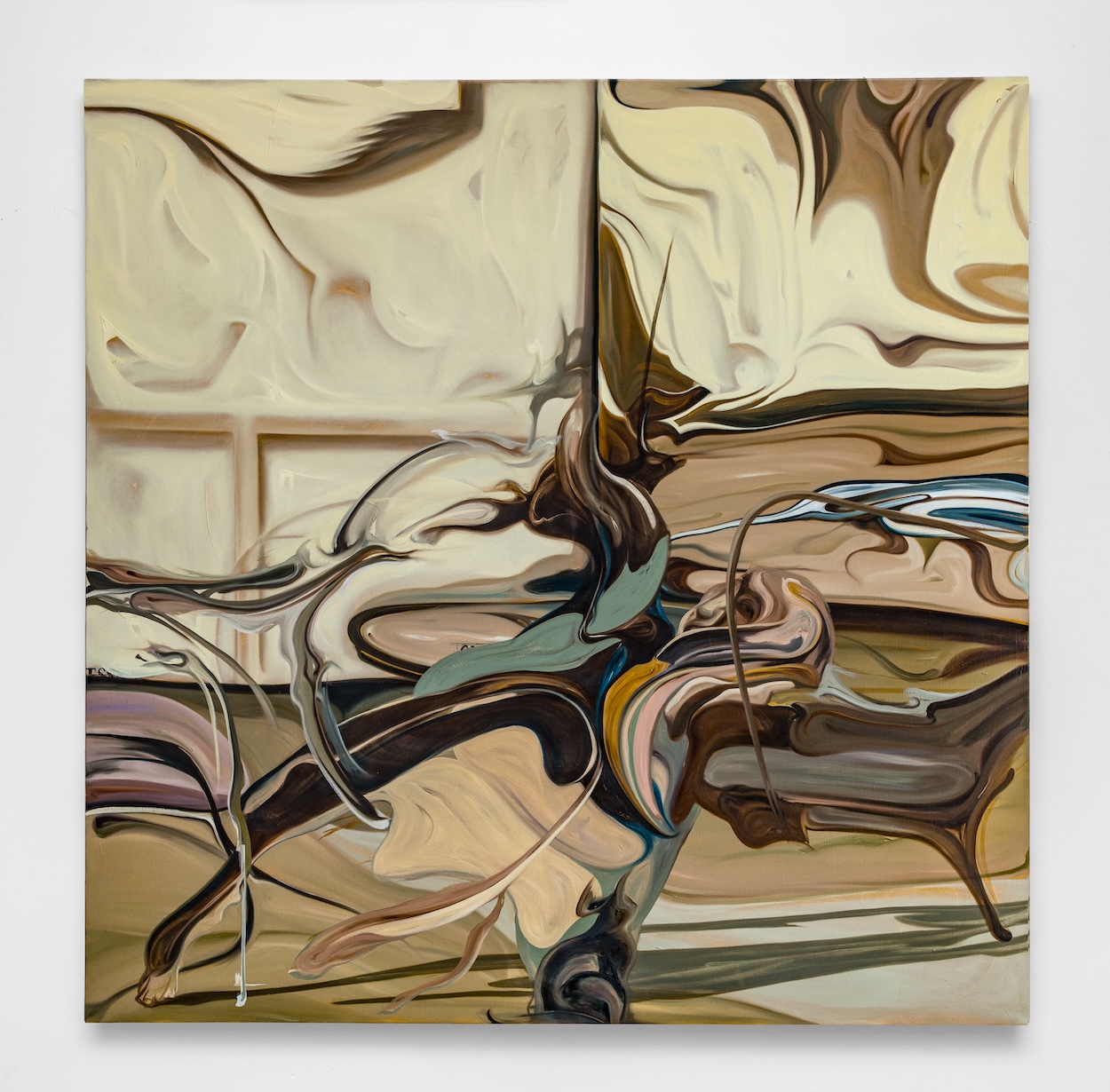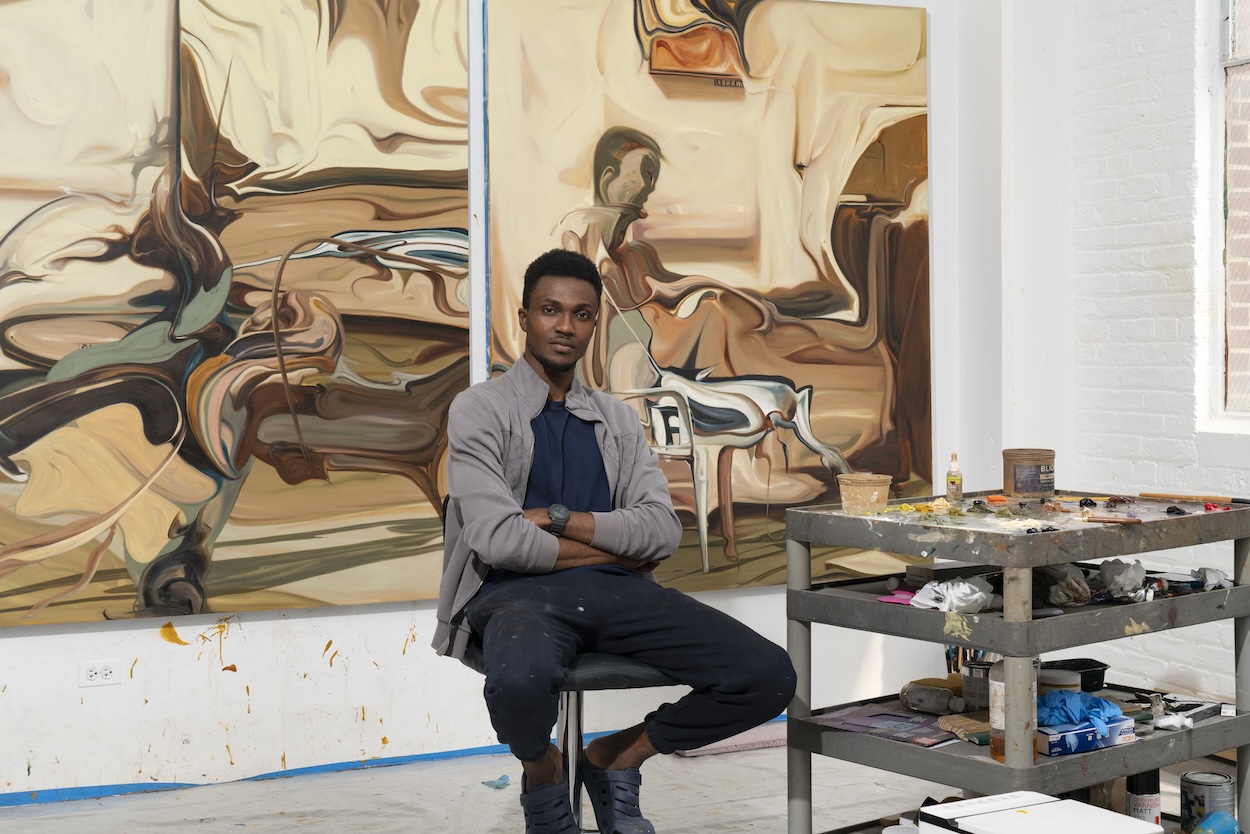Here, we ask an artist to frame the essential details behind one of their latest works.
Bio: Luke Agada, 31, Chicago (@lukechidiagada)
Title of work: The Therapist (2024).
Where to see it: “Between Two Suns” at Roberts Projects (442 South La Brea Avenue, Los Angeles) until November 2.
Three words to describe it: Tension, vulnerability, healing.
What was on your mind at the time: I reflected on the psychological toll of living in limbo, exploring the sense of dislocation and the mental health struggles migrants face. The painting addresses the emotional weight of resettlement stress, the uncertainty of time and place, and the alienation I have often endured myself. It also confronts the stigma surrounding mental health support, particularly in a world increasingly exposed to profound human atrocities. I think about the often-overlooked need for psychological care in the face of such adversity. I also consider the heavy weight of expectations placed especially upon male individuals from the part of the world I come from.
An interesting feature that’s not immediately noticeable: The painting within the painting.
How it reflects your practice as a whole: Movement and flux are some of the central elements in my practice. As a way to depict the passage of time and the transient nature of the human condition; the idea that life, experiences, and human existence itself are inherently temporary and constantly changing. It reflects the impermanence of everything from emotions, social status, and circumstances to the very nature of life and death. The work therefore embodies the idea of the psychological space known as the “third space” a hybrid space that is unstable and constantly in flux where cultures, identities, and perspectives intersect and interact, often creating a zone of negotiation, transformation, and ambiguity.
The inherent instability in the “third space” reflects a continuous search for balance, as one attempts to navigate between conflicting cultural expectations, values, or identities. It’s a space where one’s sense of self, belonging, and place in the world is constantly being redefined, often leading to feelings of dislocation, ambiguity, and tension. Even though my work is not utterly autobiographical, it reflects where I am now in a way, as my lived experience influenced the progression and evolution of my practice.
One song that captures its essence: “Bibanke” by Asa.


